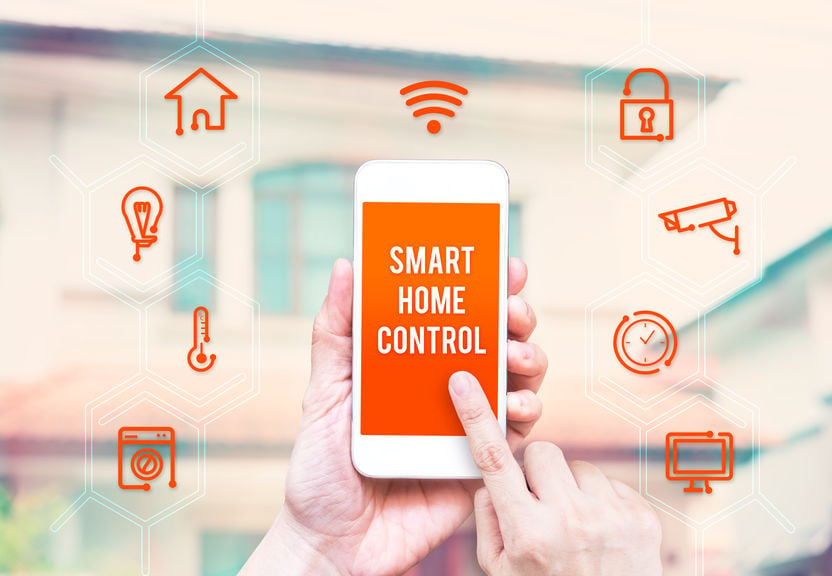Is a Smarter Home a More Secure Home?
It used to be that we kept our family and home safe with simple things: manually locking doors, motion sensor outdoor lights, a fresh battery in the smoke detector.
These days, we have so many more options to protect our homes while we’re there and away, from “smart” remotely controlled locks and alarms to wireless security cameras that automatically record and send video to the cloud, per your settings.
It’s super convenient to be able to turn on or off your heat or AC from the car or double check that your alarm is set from the office, via the Internet, but with these smart conveniences also come some security issues.
With More Connectivity, We Need More Security
Baby cams with night vision and sound. Devices with voice control. Doors, windows, lights, and HVAC systems with sensors and remote access.
Yes, with more connectivity we have more potential security risks. It’s certainly a concern that your own security system or baby camera[1] could be hacked to spy on you (or worse). The problem is that in order for manufacturers to encrypt the data that is being wirelessly transmitted (from a motion sensor, for example) so it’s not easily accessed, they might also have to compromise on connectivity or reach of the device.[2] In other words, encryption demands more processing power for reliable functionality.[3][4]
With More Security, We Need More Reliable Power: Wireless Power
More power, traditionally, means hardwiring or larger batteries. Wires decrease portability and convenience and larger batteries sacrifice a smaller, lighter design. The missing element that will allow companies to increase security features like encryption while not sacrificing design, connectivity, or reach? Wireless power.
Wireless power will also eliminate that inevitable occurrence: battery failure when it’s least convenient to do something about it: the middle of the night, while you’re on vacation, or while the babysitter is staying with your kids.
Real wireless power over a distance, that is, power without charging pads, plugs, or the need for line of sight, will enable efficient, continuous power to smart home devices. With wireless power, companies can continue to advance smart features and products while integrating the security elements they need to keep families and their homes safe.
Related Articles
Wireless Power Enables Home Safety: Part 2, Privacy
What the Future of IoT and 5G May Look Like
Wireless Power, the Next Big Thing for IoT?
Why Cota™ Wireless Power is Inherently Safe
[1] https://www.forbes.com/sites/thomasbrewster/2018/02/21/50000-mi-cam-baby-cams-vulnerable-to-simple-spy-attacks
[2] https://www.forbes.com/sites/thomasbrewster/2016/02/17/hacking-smart-security-alarms
[3] https://www.upwork.com/hiring/development/introduction-to-encryption-data-security/
[4] https://www.wired.com/insights/2013/05/9-biggest-data-encryption-myths-busted-2/







